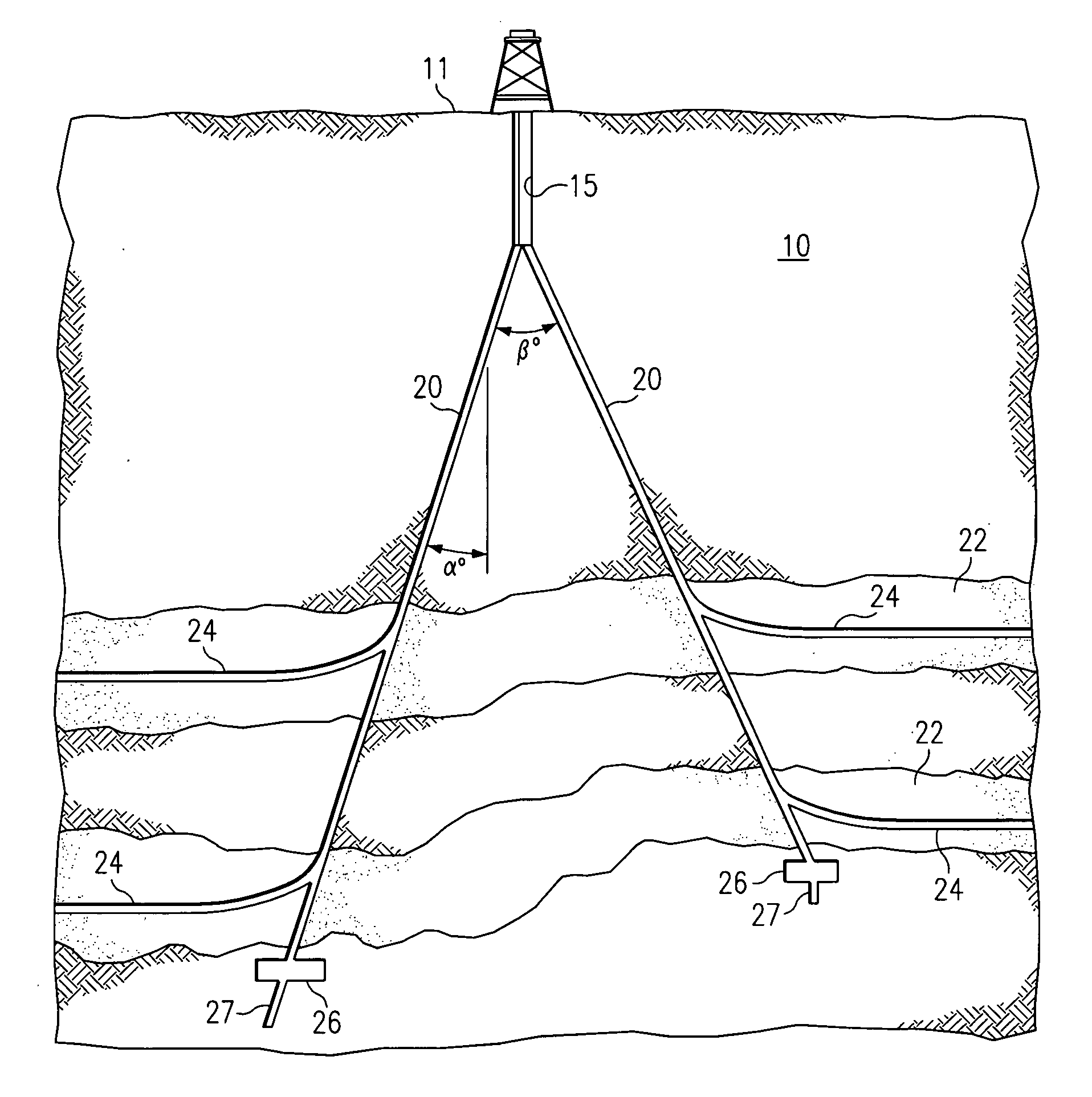Slant entry well system and method
a well system and well technology, applied in the direction of drinking water installation, wellbore/well accessories, construction, etc., can solve the problems of limited production and use of methane gas from coal deposits, affecting the recovery of subterranean resources, etc., to achieve efficient production and removal of entrapped wells, and eliminate or reduce disadvantages and problems
- Summary
- Abstract
- Description
- Claims
- Application Information
AI Technical Summary
Benefits of technology
Problems solved by technology
Method used
Image
Examples
Embodiment Construction
[0025]FIG. 1 illustrates an example slant well system for accessing a subterranean zone from the surface. In the embodiment described below, the subterranean zone is a coal seam. It will be understood that other subterranean formations and / or low pressure, ultra-low pressure, and low porosity subterranean zones can be similarly accessed using the slant well system of the present invention to remove and / or produce water, hydrocarbons and other fluids in the zone, to treat minerals in the zone prior to mining operations, or to inject or introduce fluids, gases, or other substances into the zone.
[0026] Referring to FIG. 1, a slant well system 10 includes an entry well bore 15, slant wells 20, articulated well bores 24, cavities 26, and rat holes 27. Entry well bore 15 extends from the surface 11 towards the subterranean zone 22. Slant wells 20 extend from the terminus of entry well bore 15 to the subterranean zone 22, although slant wells 20 may alternatively extend from any other sui...
PUM
 Login to View More
Login to View More Abstract
Description
Claims
Application Information
 Login to View More
Login to View More - R&D
- Intellectual Property
- Life Sciences
- Materials
- Tech Scout
- Unparalleled Data Quality
- Higher Quality Content
- 60% Fewer Hallucinations
Browse by: Latest US Patents, China's latest patents, Technical Efficacy Thesaurus, Application Domain, Technology Topic, Popular Technical Reports.
© 2025 PatSnap. All rights reserved.Legal|Privacy policy|Modern Slavery Act Transparency Statement|Sitemap|About US| Contact US: help@patsnap.com



